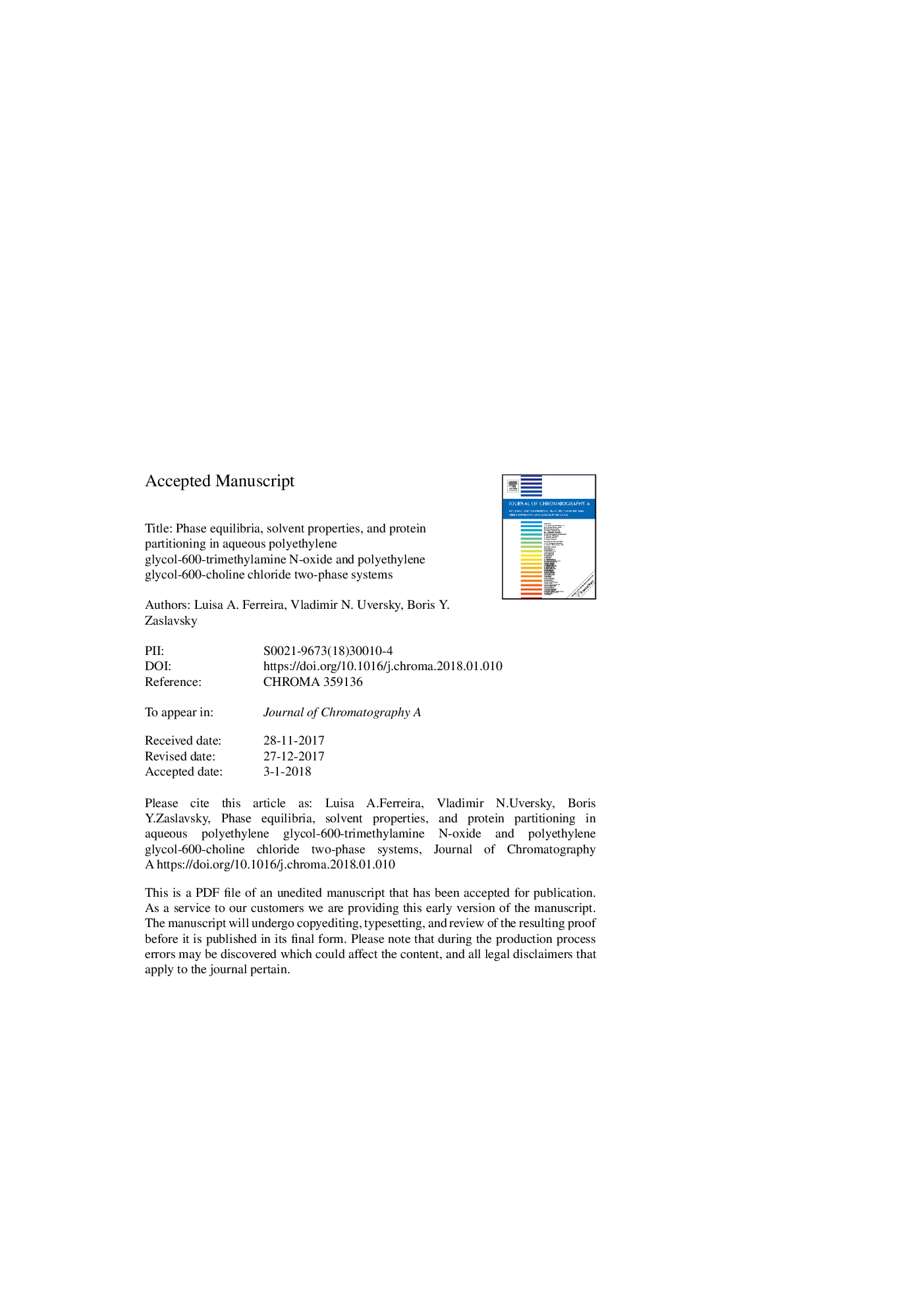| Article ID | Journal | Published Year | Pages | File Type |
|---|---|---|---|---|
| 7608978 | Journal of Chromatography A | 2018 | 33 Pages |
Abstract
The phase diagram of a new aqueous two-phase system (ATPS) formed by polyethylene glycol with molecular weight 600 (PEG-600) and trimethylamine N-oxide (TMAO) in 0.01â¯M sodium phosphate buffer (NaPB), pH 7.4, is determined and hydrophobic, electrostatic and other solvent properties of the phases are characterized. The same properties are determined for the ATPS formed by PEG-600 and choline chloride in 0.01â¯M sodium phosphate buffer (NaPB), pH 7.4. Solvent properties of water (dipolarity/polarizability, hydrogen bond donor acidity, and hydrogen bond acceptor basicity) in aqueous solutions of polypropylene glycol-400 (PPG-400), polyethylene glycol dimethyl ether -250 (PEGDME-250), and choline chloride are determined at different concentrations. The concentrations of the aforementioned polymers, as well as PEG-600 and PEG-1000 required for phase separation in mixtures with choline chloride reported in the literature are analyzed. It is found that the concentrations of polymers needed for phase separation in mixtures with 35%wt. choline chloride are linearly related with water hydrogen bond donor acidity or hydrogen bond acceptor basicity in the individual polymer solutions at given concentrations. Partition behavior of nine proteins was examined in both systems. The partition coefficients of proteins in PEG-600-choline chloride ATPS exceeded those observed in PEG-600-TMAO ATPS from ca. 2 to ca. 75-fold possibly due to the larger difference between the composition of the coexisting phases in the former ATPS. Analysis of partition coefficients in the two ATPS were compared to those reported in Dextran-PEG ATPS, and proteins likely engaged in direct interactions with choline chloride were identified.
Keywords
Related Topics
Physical Sciences and Engineering
Chemistry
Analytical Chemistry
Authors
Luisa A. Ferreira, Vladimir N. Uversky, Boris Y. Zaslavsky,
